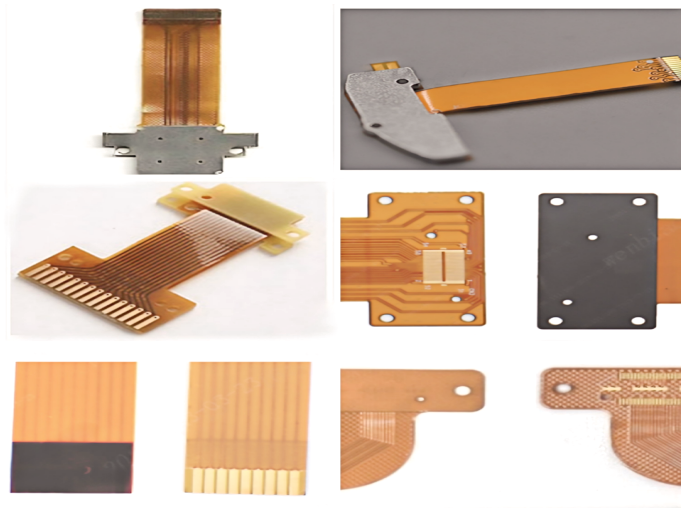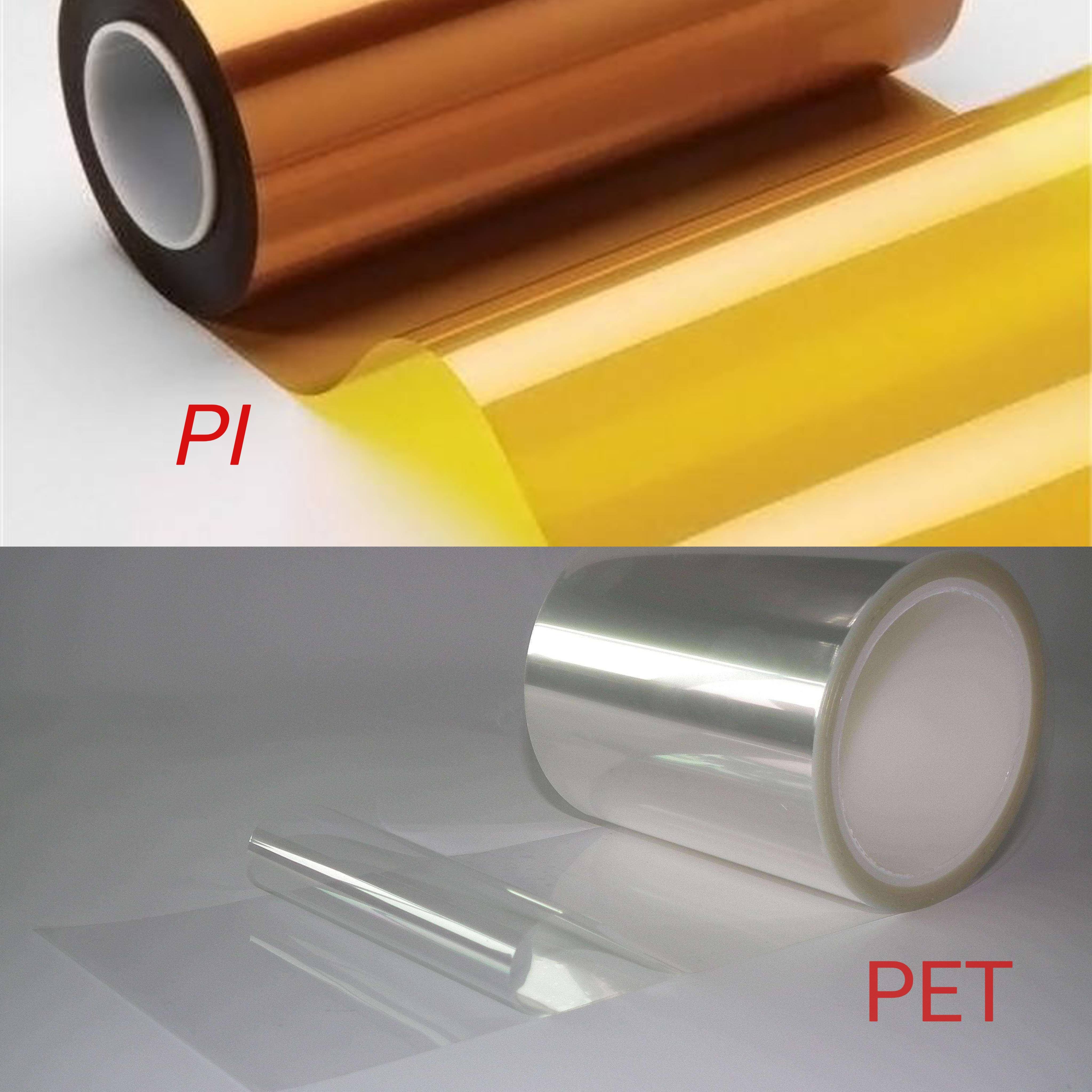Search
Differences Among Substrate, Coverlay, and PI Stiffener in Flexible FPC
- Mar 07,2025
-
Share
Shenzhen Huaruixin Electronics Co., Ltd. stands as a preeminent and highly - specialized manufacturer within the electronics industry. Our core competencies lie in the intricate design and precision production of FPC (Flexible Printed Circuit), PCB (Printed Circuit Board), and Rigid - Flex Printed Board. With years of accumulated expertise and a dedicated team of professionals, we have consistently delivered top - tier products to a diverse clientele. In this in - depth blog post, we will meticulously dissect and elucidate the variances among the substrate, coverlay, and PI stiffener in flexible FPC, drawing upon our vast industry experience and technical know - how.

1. Function
Substrate
The substrate serves as the fundamental building block of the flexible FPC. It functions as the mechanical backbone, providing a stable and reliable platform for the attachment of electronic components and the routing of circuit traces. In applications such as the flexible cables connecting the camera module to the motherboard in smartphones, the substrate ensures that the delicate electrical connections remain intact despite the repeated bending and flexing associated with the camera's movement. This mechanical stability is complemented by its excellent electrical insulation properties, effectively preventing any short - circuits between adjacent conductors. At Shenzhen Huaruixin Electronics, we firmly recognize that the selection of the substrate material is a pivotal decision that significantly impacts the overall performance, durability, and reliability of the FPC. During the design phase, we take into account a multitude of factors, including the operational temperature range, the required degree of flexibility (which is a defining characteristic of flexible circuits), and the specific electrical conductivity demands of the circuit.
Coverlay
The coverlay, also commonly referred to as the cover film, plays a crucial role in safeguarding the integrity of the FPC's circuit. It acts as a protective shield, guarding against a plethora of environmental hazards such as dust particles, moisture ingress, and chemical contaminants. In wearable electronic devices, where the FPC is often in close proximity to the human body, the coverlay serves as a barrier against sweat and body oils, which could potentially corrode the circuit traces. In addition to its protective function, the coverlay also enhances the electrical insulation of the circuit, reducing the risk of electrical leakage and ensuring optimal performance. Our company places great emphasis on the adhesion characteristics of the coverlay to the substrate. A strong and uniform adhesion is essential for ensuring long - term protection and preventing any delamination issues that could arise during the normal usage of the FPC.
PI Stiffener
The PI (Polyimide) stiffener is strategically employed to enhance the strength and rigidity of specific regions within the FPC. In areas such as FPC connectors, where frequent mating and unmating operations occur, the addition of a PI stiffener significantly improves the connection stability and extends the lifespan of the connector. By effectively resisting mechanical stress, such as tensile forces and tearing, the PI stiffener helps to prevent premature failure of the FPC in applications where it is subjected to repeated bending, stretching, or other forms of mechanical abuse. Our professional recommendation is that when determining the placement, size, and thickness of the PI stiffener, a comprehensive and detailed analysis of the stress distribution within the FPC in the actual application environment is essential. This ensures that the stiffener can effectively fulfill its intended mechanical reinforcement function without compromising the overall flexibility and performance of the FPC.
2. Material
Substrate
The two primary materials used for FPC substrates are polyimide (PI) and polyester (PET). PI substrates are highly regarded within the industry for their exceptional heat resistance, capable of withstanding extreme temperatures ranging from - 200°C to + 300°C in certain applications. They also exhibit outstanding mechanical properties, including high tensile strength and excellent flexibility, as well as remarkable chemical resistance. These properties make PI substrates an ideal choice for high - performance applications where reliability and durability are of utmost importance. In contrast, PET substrates offer a more cost - effective alternative, although they have relatively lower heat resistance and mechanical strength. At Shenzhen Huaruixin Electronics, we carefully evaluate the specific requirements of each project and make informed decisions regarding the selection of substrate materials. For applications in harsh environments, such as automotive engine compartments or aerospace systems, where high - temperature stability is critical, we typically recommend PI - based substrates.
Coverlay
The coverlay is typically fabricated from high - quality polyimide material, which provides the necessary flexibility to accommodate the bending and flexing of the FPC while maintaining its protective integrity. The surface of the coverlay may be treated with a specialized coating to enhance its adhesion to the substrate and improve its resistance to abrasion and wear. Through our extensive experience in the production of FPCs, we have found that the quality of the polyimide material used for the coverlay has a direct and significant impact on its long - term protective performance. As such, we implement strict quality control measures to ensure that only the highest - grade polyimide materials are used in the production of our coverlays.
PI Stiffener
The PI stiffener is also composed of polyimide, but its formulation and manufacturing process are often optimized to achieve enhanced stiffness and mechanical strength. In some cases, additional reinforcing elements, such as fibers or fillers, may be incorporated into the polyimide matrix to further improve its performance. During the manufacturing process of the PI stiffener, it is crucial to ensure the uniform distribution of these reinforcing elements to avoid any variations in mechanical properties. This requires precise control over the manufacturing process and the use of advanced production techniques.
3. Thickness
Substrate
The thickness of the substrate can vary widely depending on the specific application requirements. Common substrate thicknesses range from as thin as 1/2 mil to as thick as 5 mil. In applications where space is at a premium, such as in compact medical devices or miniature electronic components, thinner substrates are often preferred to achieve maximum flexibility and minimize the overall size of the FPC. Conversely, in applications that require higher mechanical strength, such as in industrial equipment or automotive applications, thicker substrates may be selected. At Shenzhen Huaruixin Electronics, our extensive experience in working with substrates of various thicknesses allows us to provide expert advice and guidance to our customers, helping them to make the most appropriate choice for their specific applications.
Coverlay
The coverlay is generally relatively thin, with typical thicknesses of 1/2 mil or 1 mil. This thin profile enables the coverlay to conform closely to the surface of the FPC, providing comprehensive protection without adding excessive bulk. During the manufacturing process, it is essential to ensure that the thickness of the coverlay is consistent and uniform across the entire surface of the FPC. Any variations in thickness could potentially lead to uneven protection, reduced adhesion, or other performance issues.
PI Stiffener
The thickness of the PI stiffener can range from 0.075mm to 0.25mm, depending on the level of reinforcement required. Thicker PI stiffeners are typically used in areas where significant mechanical strength is needed, such as in large - scale connectors or areas of the FPC that are subject to high levels of stress. When integrating the PI stiffener with the FPC, it is important to carefully consider the thickness differential between the two components to ensure a smooth and seamless transition. This helps to prevent the formation of stress concentration points, which could potentially lead to premature failure of the FPC.
4. Color
Substrate
The substrate typically has a natural, colorless appearance, and its color generally does not have a significant impact on its functional performance. However, in some specialized applications, a colored substrate may be used for identification purposes or to meet specific aesthetic requirements.
Coverlay
The coverlay is available in a variety of colors, including yellow, white, and black. Yellow is the most commonly used color due to its ease of processing, excellent adhesion properties, and overall stability. White coverlays are often chosen for applications where high reflectivity is desired, such as in lighting - related FPCs. Black coverlays, on the other hand, are suitable for applications where light interference needs to be minimized, such as in optical or sensor - based systems. At Shenzhen Huaruixin Electronics, we offer a wide range of coverlay colors to meet the diverse needs of our customers.
PI Stiffener
The color of the PI stiffener may vary with its thickness. Generally, the thicker the PI stiffener, the darker its color. For example, a 0.075mm thick PI stiffener may have a light brownish color, while a 0.25mm thick PI stiffener may appear almost black. This color variation is primarily due to the optical properties of the polyimide material and the way it interacts with light at different thicknesses.

In conclusion, the substrate, coverlay, and PI stiffener in flexible FPC each play distinct and crucial roles in determining the overall performance, reliability, and functionality of the FPC. Understanding the differences among these components in terms of their function, material properties, thickness, and color is essential for the successful design, production, and application of high - quality FPCs. Shenzhen Huaruixin Electronics Co., Ltd. is committed to leveraging our expertise and experience to provide our customers with the highest - quality FPC solutions. We welcome industry colleagues, new and old, to engage in technical discussions and collaborative projects, as we believe that knowledge sharing and innovation are the keys to driving the FPC industry forward.

Let’s talk! We’ll provide the perfect solution for you!
-
 Huaruixin Electronics mainly produces printed circuit boards as the core business, to provide customers with one-stop solutions for FPC/PCB production, components sourcing and Assembly.
Huaruixin Electronics mainly produces printed circuit boards as the core business, to provide customers with one-stop solutions for FPC/PCB production, components sourcing and Assembly. - WHAT WE DO — PCB Design Solutions — Flex PCB Production — Components Sourcing — FPC&PCB Assembly
- PRODUCTS — Single Sided Flexible Circuits — Double Sided Flexible Circuits — Multilayer Flexible Cirucits — Rigid-Flex Circuits — FPC Assembly — PCB Assembly
- CAPABILITY — FPC Capability — Rigid-Flex Capability — PCB Capability — Assembly Capability
- Copyright © 2024 Shenzhen Huaruixin Electronics Co., Ltd. All Rights Reserved.
- Design By BONTOP


